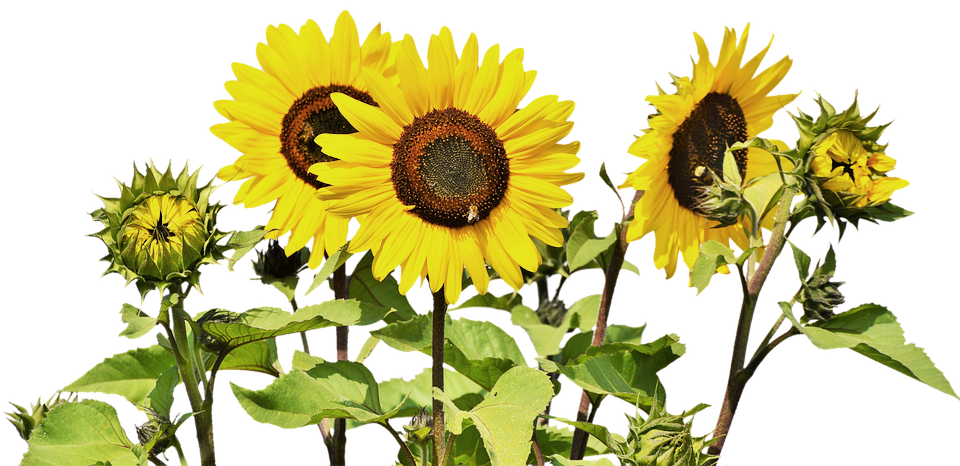
Tackling Aphids
By Chris Edmunds
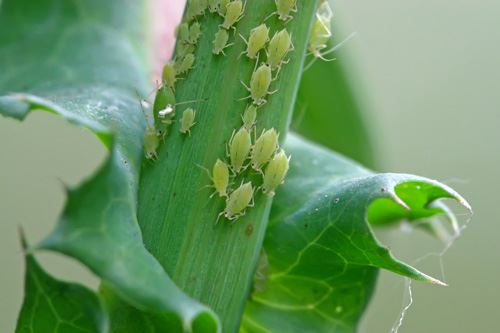
Having a garden covered in small white flecks, or a sticky residue is a clear sign that you have some unwanted aphids. These annoying pests not only damage your garden but can prevent you from enjoying it. Luckily, once you know what you’re doing, aphids are easy to tackle.
You can ask an expert, like the staff at the greenhouse in Blue Springs, for advice with advanced aphid infestations. Every plant nursery in Blue Springs carries natural aphid control products you can use for tough infestations.
Spotting Aphids
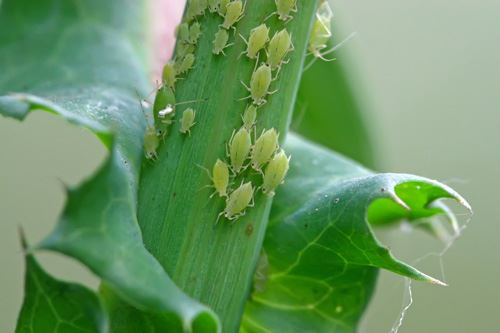 Aphids are tiny, pear-shaped insects that can grow up to ⅛ of an inch in length. They vary in color, are usually green, but can also be grey, black, yellow, orange, or even red. You’ll normally see them grouped together on buds, the undersides of plant leaves, or hidden in the growth tips (ends of branches). They especially enjoy soft new plant growth, it’s like the great green pasture-in-the-sky for these guys.
Aphids are tiny, pear-shaped insects that can grow up to ⅛ of an inch in length. They vary in color, are usually green, but can also be grey, black, yellow, orange, or even red. You’ll normally see them grouped together on buds, the undersides of plant leaves, or hidden in the growth tips (ends of branches). They especially enjoy soft new plant growth, it’s like the great green pasture-in-the-sky for these guys.
The Life of an Aphid
Although, these creatures are not welcome in our gardens, they have a pretty interesting life cycle.
Aphids are quite adaptable and have two reproduction cycles. During the spring, all their overwintered eggs hatch into already pregnant females. These ladies lay their eggs and set to work devouring our gardens. Their newly laid eggs will produce both males and females. Once hatched, these new arrivals start brewing up the eggs that overwinter to finish the cycle. Aphids attach the new eggs right onto plants, so you can stop the cycle early by simply spraying them off with water.
Damage by Aphids
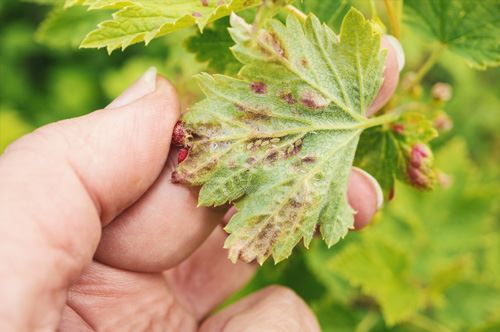 Since aphids feed by sucking sap, this is very destructive to your plants. If your plant is infected, you may notice yellow discolorations, distorted or wilted leaves. In early stages, they excrete a sticky residue known as “honeydew” that attracts ants. If you see ants or can notice sticky stuff on the leaves, look for eggs and/or adults.
Since aphids feed by sucking sap, this is very destructive to your plants. If your plant is infected, you may notice yellow discolorations, distorted or wilted leaves. In early stages, they excrete a sticky residue known as “honeydew” that attracts ants. If you see ants or can notice sticky stuff on the leaves, look for eggs and/or adults.
More noticeable, perhaps, are the white flecks or exoskeletons, that are left behind as they grow. Aphids can molt 4 times before reaching adulthood, so keeping an eye out for this “dandruff” can help you figure out if you have a problem.
Some aphids can even carry diseases, and can transmit a disease from an infected plant to a healthy plant. Be sure to check your petunias and other plants in your garden for any signs of aphids and tackle them right away to keep them safe.
Getting Rid of Aphids
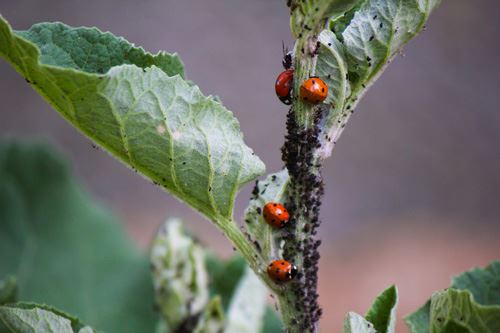 Fortunately, aphids have a lot of predators and are controlled by weather conditions. Normally, after the spring season in our area, you don’t have to worry about them. They’ve had their merry little feast, laid their eggs for next year, sprouted wings (or not… apparently some don’t….they are such strange little creatures) and croaked.
Fortunately, aphids have a lot of predators and are controlled by weather conditions. Normally, after the spring season in our area, you don’t have to worry about them. They’ve had their merry little feast, laid their eggs for next year, sprouted wings (or not… apparently some don’t….they are such strange little creatures) and croaked.
If you discover them in the spring, a simple way to get rid of them is to wash them away with a powerful spray of water. You probably will need to do this several times in a row (within a 3 day period) without drowning the plant.
Another way is to unleash a legion of ladybugs, who love to feast on them! Other predators include the aphis lions and syrphid fly larvae. You can check your nearest Kansas nursery, or Google “predatory insects” for places to buy these “hungry helpers” if you want to give this method a try.
If the aphids have gotten out of control, you could also use an organic pesticide, such as insecticidal soap or horticultural oils.You’ll find a great assortment of these products at our garden center in Andover. Alternatively, you could make your own “special brew” by adding a teaspoon or two of dishwashing soap to a spray bottle of lukewarm water. You’ll need to spray repeatedly (target the undersides of leaves and new growth especially) to catch them in all their life cycles. Avoid using harsh chemical sprays, which can also wipe out the good insects, making the situation worse.
Keeping your garden healthy from unwanted pests is important. By checking your garden regularly for signs of aphids, you’ll be able to catch them early. Tackling them swiftly before they get out of hand is the key to a healthy garden.

